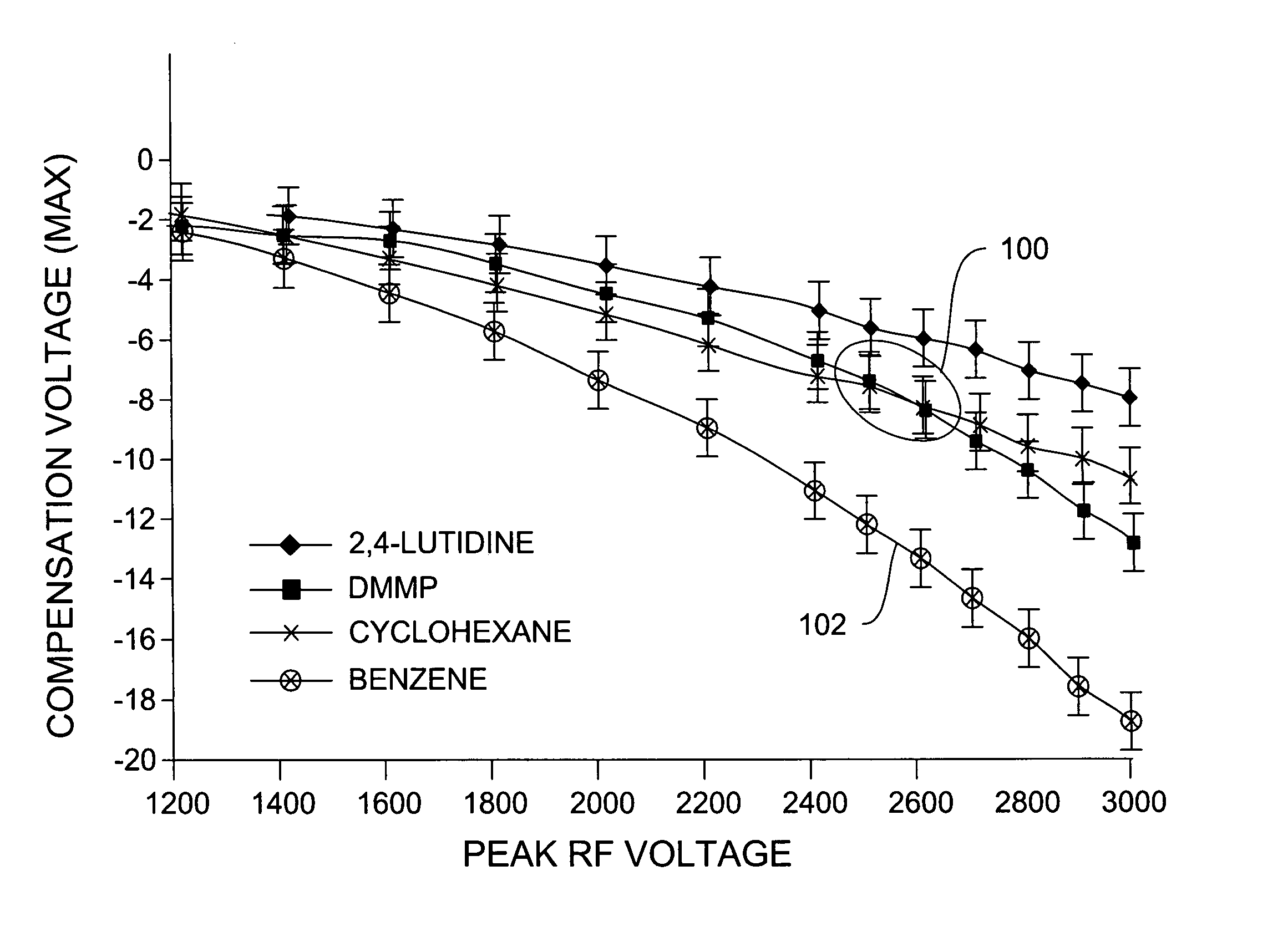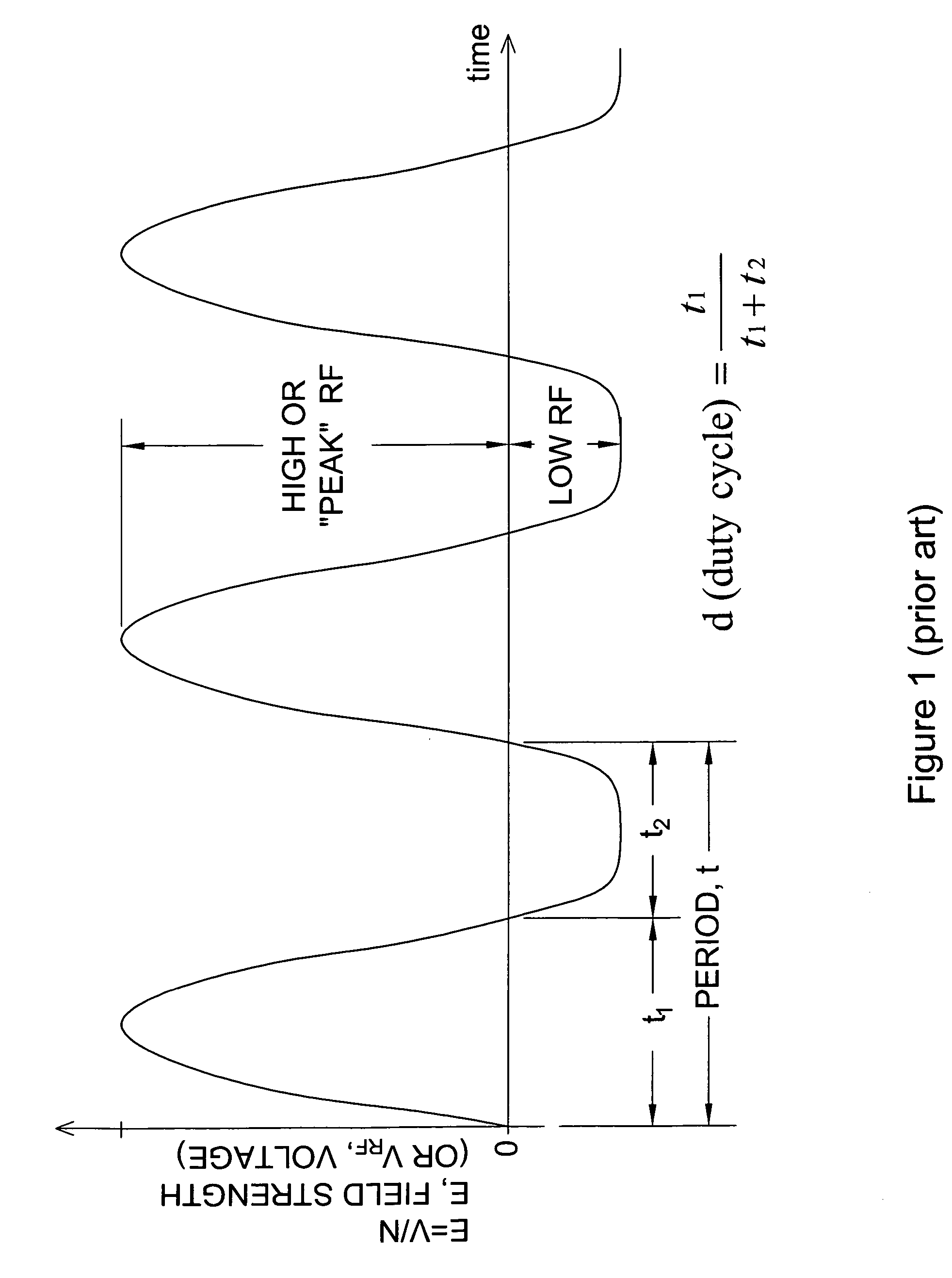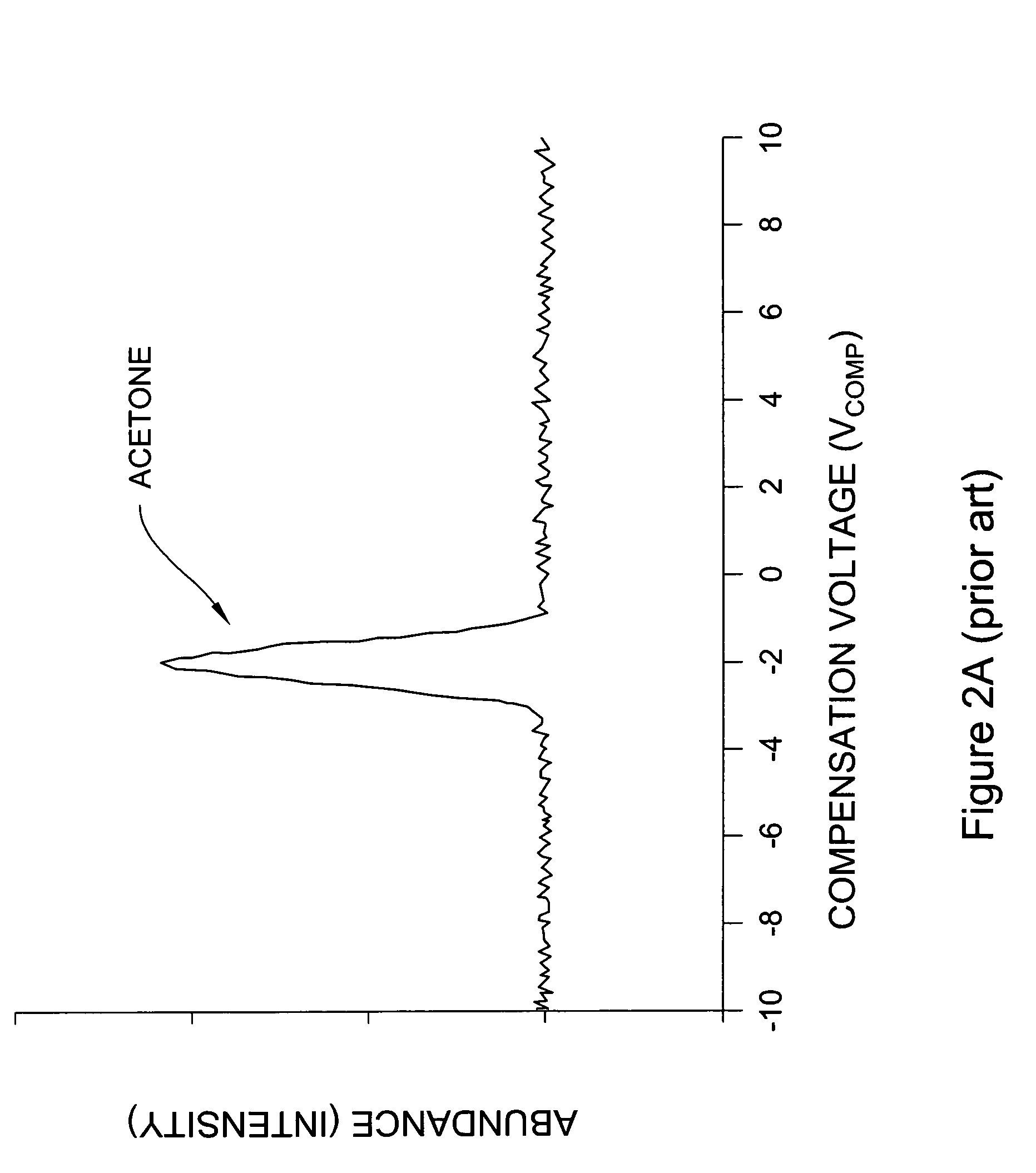Systems and methods for ion species analysis with enhanced condition control and data interpretation
a condition control and condition analysis technology, applied in the field of mobility-based systems, methods and devices for analyzing samples, can solve the problems of difficult deployment, over $100 in mass spectrometers, and high cost of mass spectrometers, so as to improve the resolution of an ion mobility-based analyzer, reduce the overlap of spectral peak, and improve the accuracy of sample species discrimination
- Summary
- Abstract
- Description
- Claims
- Application Information
AI Technical Summary
Benefits of technology
Problems solved by technology
Method used
Image
Examples
Embodiment Construction
[0205]As described above in summary, the invention is generally directed to systems, methods and devices for providing improved detection, measurement, discrimination and analysis (collectively “analysis”) of compounds. The compounds analyzed may include any compound, both organic and inorganic, and without limitation elements, chemicals, and biologicals. In particular illustrative embodiments, the invention is directed to improved ion mobility-based compound analysis. Particular features of the invention include using multiple combined analytical techniques to improve compound analysis. By way of example, in various illustrative embodiments, the invention combines Field Asymmetric Ion Mobility Spectrometers (FAIMS), also known as Differential Mobility Spectrometers (DMS) or Radio Frequency Ion Mobility Spectrometers (RFIMS) among other names (collectively DMS) with ion mobility spectrometry (IMS), time of flight (TOF) IMS, gas chromatography (GC), Fourier transform infrared (FTIR) ...
PUM
| Property | Measurement | Unit |
|---|---|---|
| electric field strengths | aaaaa | aaaaa |
| RF field voltage | aaaaa | aaaaa |
| RF field voltage | aaaaa | aaaaa |
Abstract
Description
Claims
Application Information
 Login to View More
Login to View More - R&D
- Intellectual Property
- Life Sciences
- Materials
- Tech Scout
- Unparalleled Data Quality
- Higher Quality Content
- 60% Fewer Hallucinations
Browse by: Latest US Patents, China's latest patents, Technical Efficacy Thesaurus, Application Domain, Technology Topic, Popular Technical Reports.
© 2025 PatSnap. All rights reserved.Legal|Privacy policy|Modern Slavery Act Transparency Statement|Sitemap|About US| Contact US: help@patsnap.com



